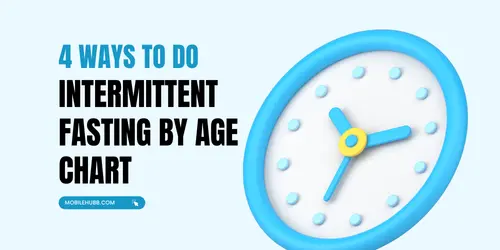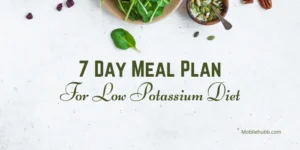Intermittent fasting has become a popular health trend these days, which helps in weight loss, boost metabolism and improve overall health. But its effects can be different for every age. In this guide we will see how fasting can be adjusted for different agegroups using an Intermittent Fasting by Age Chart, helping you make the best choice for your health.
What is Intermittent Fasting?
Intermittent fasting is an eating pattern in which you cycle between eating and fasting. The focus is not on what you eat, but on when you eat. With an Intermittent Fasting by Age Chart, you can adjust your fasting plan to suit your body’s needs as you get older.
Intermittent Fasting Benefits for Different Age Groups
1.Ages 20-30 Building the Foundation
In your 20s, metabolism is generally fast and energy levels are also high. This is a good time to try different fasting schedules. The 16:8 method (16 hours fasting, 8 hours eating) or a 14/10 intermittent fasting schedule may be beneficial for weight control and muscle growth.
- Benefits Helps maintain lean muscle, boosts metabolism, and improves focus.
- Recommendation Combine fasting with exercise for optimal results.
2. Ages 30-40 Maintaining Energy and Focus
As you enter your 30s, your metabolism slows down and hormonal changes affect your energy levels. At this age, a suitable fasting approach such as 14/10 intermittent fasting can help you manage energy and weight better.
- Benefits Supports hormonal balance, helps in maintaining weight, and enhances mental clarity.
- Recommendation During your eating window, focus on a balanced diet so that the body’s needs can be fulfilled.
3. Ages 40-50 Supporting Metabolism and Heart Health
In your 40s, metabolism slows and body structure changes Fasting methods such as 12/12 intermittent fasting (12 hour fasting, 12 hour eating) can help manage these changes and support heart health.
- Benefits Improves insulin sensitivity, supports cardiovascular health, and reduces fat.
- Recommendation Keep your meals nutrient-dense to help preserve your muscles and bones.
4. Ages 50 and Above Focusing on Longevity
For people in their 50s and above, intermittent fasting can still be beneficial, but it needs to be done with a gentle approach. Shorter fasting periods such as a 10/14 fasting schedule (10 hours of eating, 14 hours of fasting) may be better.
- Benefits Reduces inflammation, improves brain function, and reduces the risk of age-related diseases.
- Recommendation Consult a doctor before starting any fasting regimen at this age, especially if you have any medical condition.
Intermittent Fasting by Age Chart
For convenience, here is a simple Intermittent Fasting by Age Chart that you can follow
| Age Group | Fasting Schedule | Eating Window | Benefits |
|---|---|---|---|
| 20-30 | 16/8 or 14/10 | 8-10 hours | Boosts metabolism, supports muscle gain |
| 30-40 | 14/10 or 12/12 | 10-12 hours | Maintains energy, supports hormone balance |
| 40-50 | 12/12 or 10/14 | 10-12 hours | Improves insulin sensitivity, reduces fat |
| 50+ | 10/14 or custom | 10 hours or less | Supports brain health, lowers inflammation |
Key Tips for Fasting Based on Age
- Young People (20-30 years) Focus on performance and muscle building. Combine fasting with workouts for the best results.
- 30-40 years old Hormonal balance is important Flexible fasting like 14/10 intermittent fasting helps manage energy levels.
- 40-50 years old Health is important for the heart and metabolism 12/12 intermittent fasting is ideal for balancing energy and health.
- 50+ people Choose soft fasting methods and focus on nutrient rich foods to maintain longevity and health.
Fasting Precautions for Different Age Groups
While intermittent fasting has many benefits, it’s important to adjust your approach to your age and health Here are some precautions that may help:
- In your 20s and 30s It’s important to stay hydrated and get enough protein during your eating window to support muscle growth.
- In your 40s Pay attention to your heart’s health. Include heart-healthy foods like avocados, nuts, and fish in your diet.
- In your 50s and beyond Focus on the health of your bones and joints. It’s important to get enough calcium and vitamin D.
Conclusion
Intermittent fasting can be beneficial for your health at every age, but it is important to tailor your fasting schedule to your age and specific health needs. By using the Intermittent Fasting by Age Chart, you can maximize the benefits of fasting and understand how to feed and care for your body as needed.
If you want to understand the method of fasting for your age group, it is best to seek advice from a healthcare professional.
Related Posts
How does intermittent fasting benefit people in their 20s?
For people in their 20s, fasting schedules like 16/8 or 14/10 can help boost metabolism, maintain lean muscle, and improve focus. It’s a great time to combine fasting with exercise for enhanced muscle growth and weight management.
What is the ideal intermittent fasting schedule for those in their 30s?
In your 30s, a 14/10 fasting schedule is recommended to maintain energy levels and support hormone balance. This approach can also help manage weight and improve mental clarity as your metabolism begins to slow down.
How does intermittent fasting help people in their 40s?
In your 40s, fasting methods such as 12/12 or 10/14 can support metabolism and heart health. These schedules help improve insulin sensitivity, reduce body fat, and promote cardiovascular health, which becomes important as the body undergoes structural changes.
Is intermittent fasting safe for people in their 50s and beyond?
Yes, but it’s advisable to follow a gentler fasting schedule, such as 10/14. This approach reduces inflammation, improves brain function, and lowers the risk of age-related diseases. Consulting a healthcare professional before starting any fasting routine is highly recommended for individuals in this age group.
What precautions should be taken when fasting at different ages?
In your 20s-30s: Stay hydrated and ensure you’re getting enough protein to support muscle growth.In your 40s: Focus on heart-healthy foods like fish, avocados, and nuts to support cardiovascular health.In your 50s+: Prioritize bone health by including calcium-rich foods and Vitamin D in your diet.
What is the Intermittent Fasting by Age Chart?
The Intermittent Fasting by Age Chart provides guidance on the ideal fasting and eating windows for different age groups. It outlines which fasting schedules are most beneficial for your age, helping you maximize the benefits of fasting as you get older.









